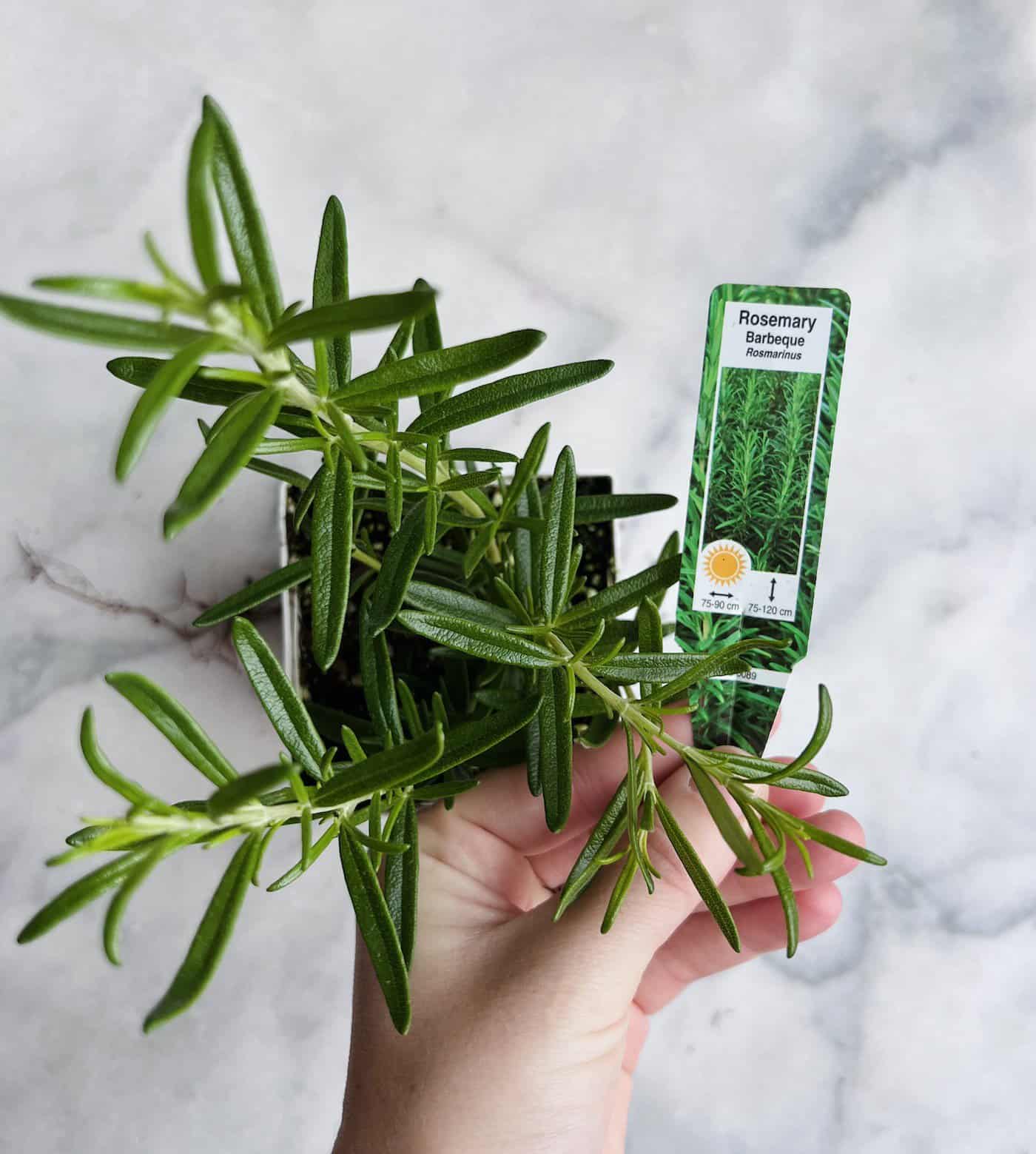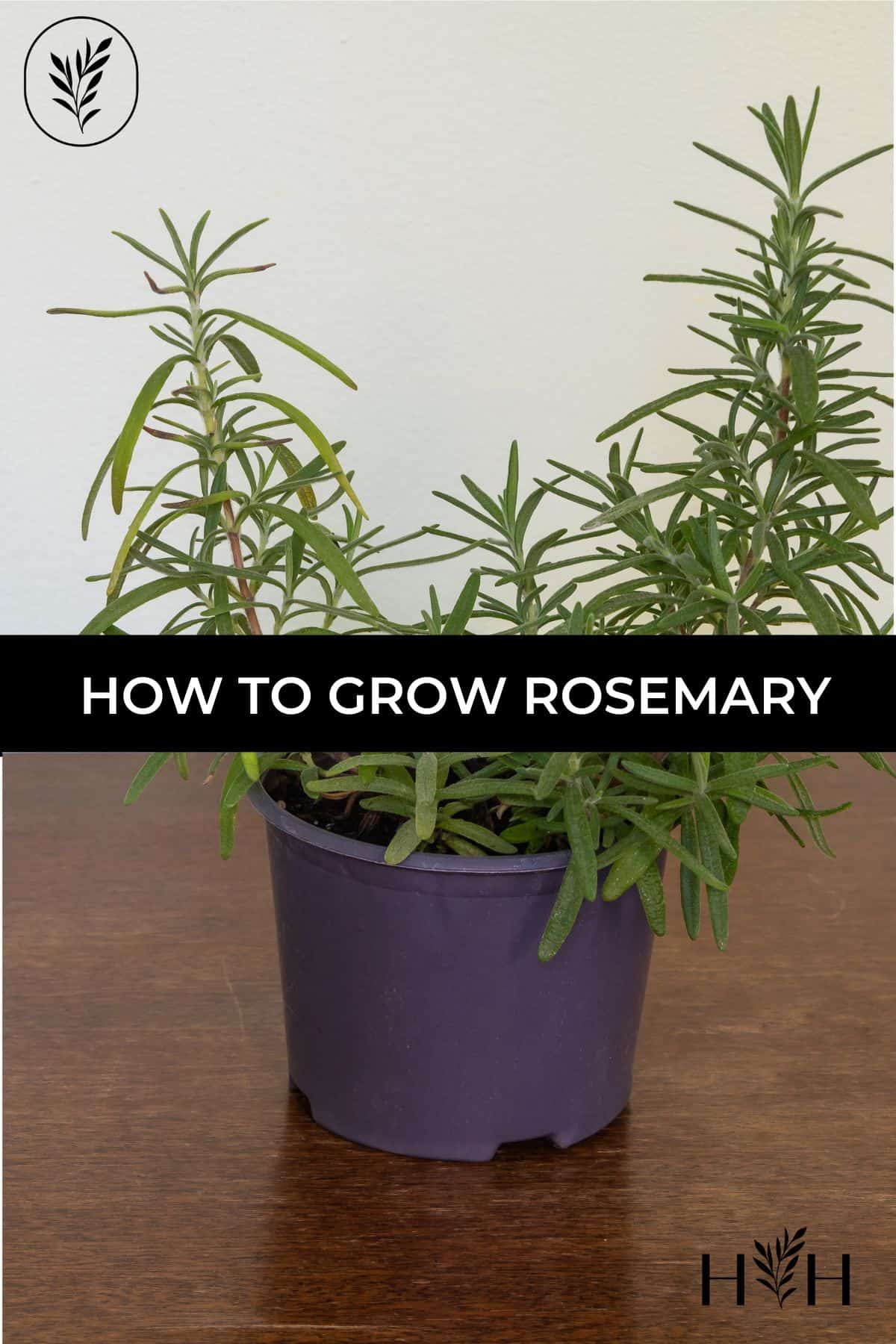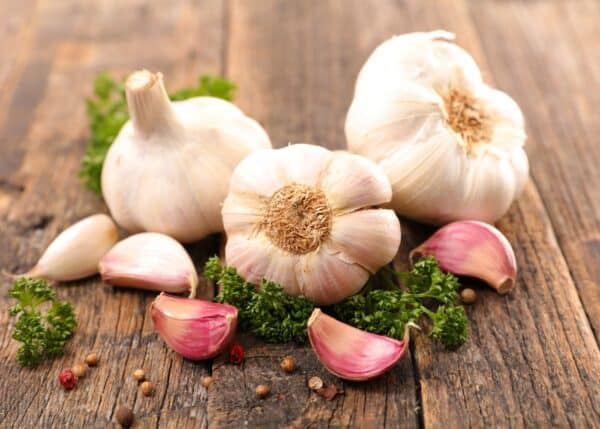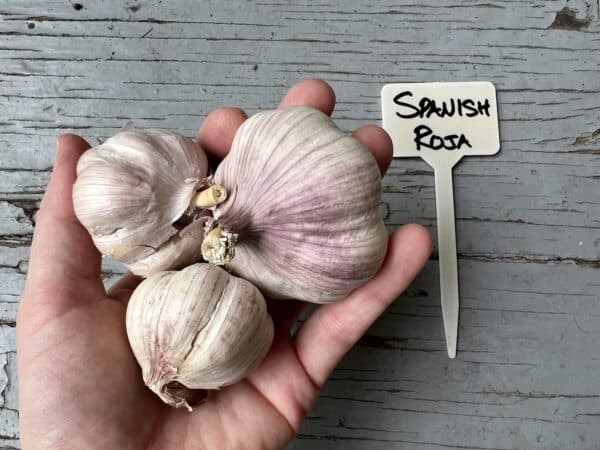Rosemary (Salvia rosmarinus) is a great beginner-friendly herb with many uses in the garden and the kitchen. Its tolerance of neglect and stunning foliage and flowers make this plant a must-have for any warm perennial garden.
Rosemary grows best in warm, sunny climates similar to their native Mediterranean region. There are several varieties to choose from with different growth habits, tolerances, and looks, ensuring there is an option for everyone. Once established, these plants are quite drought-tolerant and don’t need much attention to thrive.
About rosemary
Seasoned gardeners may recall the original scientific name of rosemary – Rosmarinus officinalis. However, in 2017, the plant was moved to the popular Salvia genus, now known as Salvia rosmarinus. But honestly, there is no need to remember the scientific name of this plant, one of the most recognizable herbs around the world.
Part of the Lamiaceae family, rosemary is closely related to many other common herbs, including basil and mint. It is technically classified a shrub, with woody stems and narrow gray-green foliage that has a wonderful scent.
The foliage isn’t the only thing to love about this plant. Rosemary also produces small blooms in a range of colors from white to purple and even blue. That’s one of the many reasons why it’s great to grow yourself rather than purchasing from your local grocery store.
Rosemary is native to the Mediterranean, and accustomed to warm conditions and plenty of sun. The specific epithet ‘ros marinus’ translates to ‘dew of the sea’, giving an indication as to where they grow naturally. Replicating these conditions in your garden is key to getting the most out of this versatile shrub.
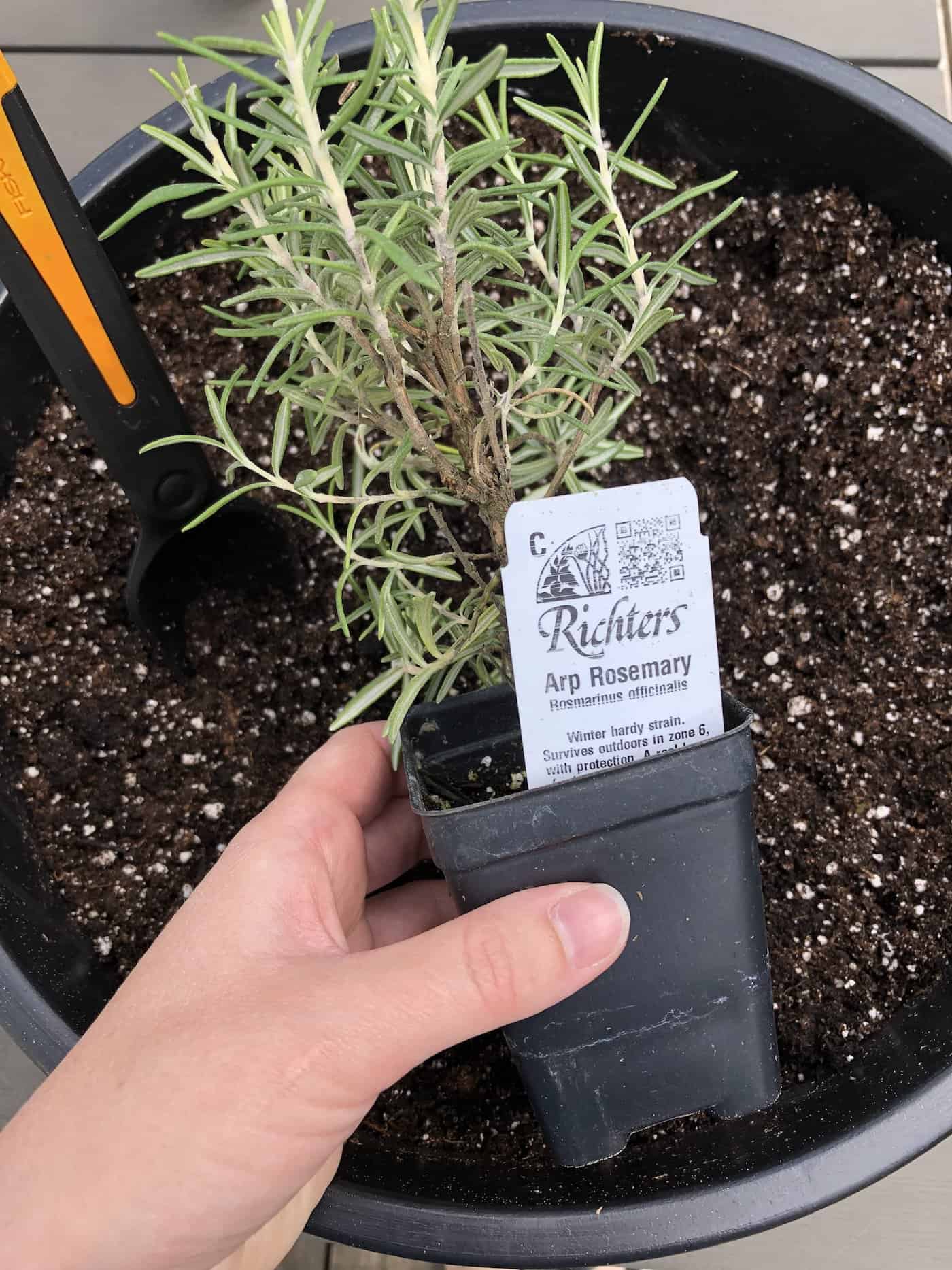
Rosemary varieties
Thanks to plant breeders, there are several rosemary varieties to choose from. Some are more shrub-like, growing tall and upright, while others spread along the ground and act as a ground cover. Each variety also has slightly different growing tolerances – for example, some are more tolerant of cold than others – and the leaves and blooms can also differ between varieties.
‘Albus’ is a personal favorite, named for its adorable white flowers. This variety not only has culinary value, but great ornamental value too.
‘Golden Rain’ is also named for its color, but not in the flowers. This variety sports touches of yellow on the leaves that change throughout the seasons.
If you’re looking for something able to handle the cold better than standard rosemary, ‘Arp’ is an ideal cultivar.
Finally, there are also species of creeping rosemary that make wonderful groundcovers or look great spilling over the edges of large containers.
Planting rosemary
Rosemary is typically planted using starter plants from your local nursery, or from cuttings. It is possible to grow rosemary from seed, but germination is quite slow and takes a lot of patience. Depending on what time of year you are planting and how quickly you want to harvest, established plants are usually best.
Where does rosemary grow best?
Although rosemary can tolerate cold better than some other herbs, it still prefers warmth and lots of sun throughout the day. It is an ideal shrub for USDA Zones 8 and above, although some varieties are more cold-hardy and suitable for growing in lower zones.
Originating from coastal Mediterranean areas, rosemary does best in dry air. Humidity can promote fungal diseases that may kill of the plant and make the leaves completely inedible. Regular pruning to improve airflow can limit potential issues, but the plant will grow far better in areas with lower humidity levels.
Spacing is also important to consider, depending on your chosen variety. Rosemary can become quite a large shrub if given the space and the right conditions. Gardeners often use the dense and woody growth to shape into a low hedge, separating areas of the garden. This only adds to its versatility in the garden and increases your potential harvest for the kitchen.
If you don’t have a large patch of space in your backyard, or perhaps no backyard at all, rosemary is also great for growing in containers. Choose one of the compact types suitable for growing in smaller containers, or plant in a large pot to give your rosemary space to grow.
Can you grow rosemary indoors?
Rosemary has an incredible ability to enhance the flavor of warm, wintery dishes like stews and roasts. And in winter, the last thing we want to do is step out into the cold to harvest a few sprigs for dinner. That’s just one of the many reasons why rosemary is so popular to grow indoors.
While rosemary is not the trickiest herb to grow indoors, it certainly isn’t easy either. This woody herb appreciates warmth, dry air and full sun – not conditions that are easy to find indoors. Space is another concern, considering the size of the container needed to keep these plants happy.
The other concern is overwatering. Rosemary is quite drought tolerant and doesn’t need water as often as other herbs, even when growing in containers. Watering frequently is a common mistake many beginners make, quickly leading to rotting and the plant’s ultimate demise.
Rosemary is a tough, resilient plant that will happily stay inside for a couple of months with no trouble. Unfortunately, if you’re looking for strong growth and a big harvest, it’s best to keep it outdoors.
When should I plant rosemary?
Like other warm-season herbs, rosemary is best planted in spring. Wait until all chance of frost has passed to avoid damage to the leaves and roots while the plant is still becoming established. If starting seeds, sow indoors with the help of grow lights and a heating mat to get a head start on growth.
While rosemary can handle the heat well, it’s best not to plant in the height of summer as this can lead to stress and more water consumption than usual. If you’re considering growing indoors where it is warm year-round, you can plant in any season, provided you have the right lighting and temperature conditions in your home to keep them alive.
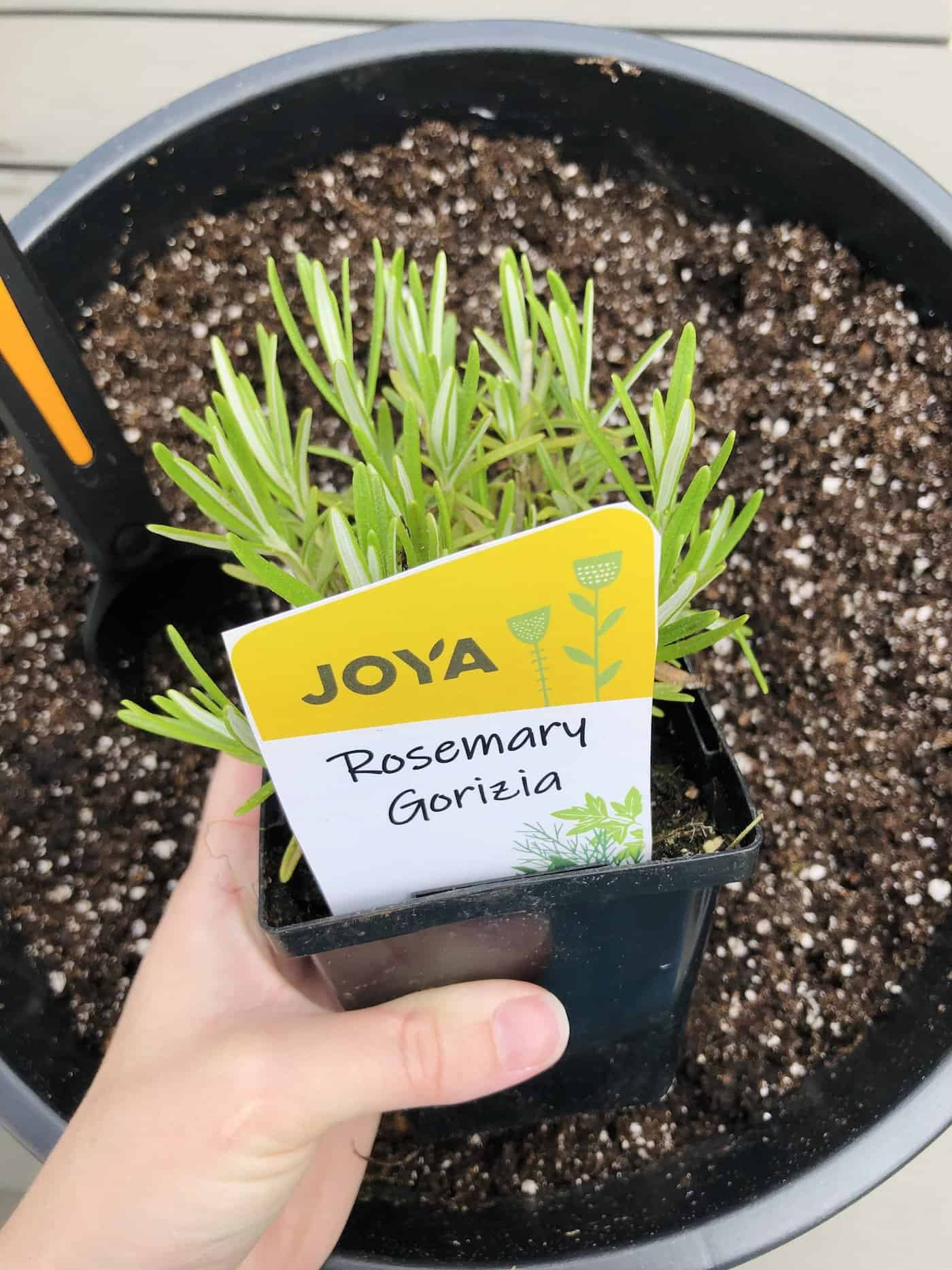
How to plant rosemary
Rosemary is typically planted from container plants purchased from a nursery. If you’ve propagated from cuttings, keep your cutting in a small container until it is ready to be transplanted out into the garden. Follow these easy steps to transplant:
- Amend the soil. Rosemary can handle poor-quality soils well, happy in gritty or sandy soils with fewer nutrients than usual. However, as they are sensitive to rotting and prefer the soil to dry out, clay soil is not suitable. If your bed has clay soil, amend with plenty of sand and compost before planting.
- Dig a hole. It should be slightly larger than the original container the plant came in. When planting multiple plants, space them around 2 feet apart, with slight variations depending on your chosen variety.
- Plant. Gently tease the roots and plant the rosemary in the hole at the same level it was in the previous container. Press down around the base to settle any air pockets.
- Water. Water immediately after planting to encourage new root growth down into the soil. Don’t overwater, especially in the early stages of establishment, to prevent rotting.
Rosemary care
Once established, rosemary is not a difficult plant to care for. In fact, it is one of the more low-maintenance herbs, thriving off of as little attention as possible.
Light
A full day of sun is essential for strong growth and flowering (if that’s what you’re after). Ensure your rosemary receives a minimum of six hours of direct sun per day, preferably closer to eight. When choosing your planting site, watch out for any shadows from nearby objects or plants that may lower the amount of direct light received throughout the day.
When growing indoors where light is less intense, aim for 10-12 hours. If the stems begin to stretch and gaps between the leaves expand, looking leggy, supplement with grow lights to improve conditions.
Watering
Once established, rosemary is considered quite drought-tolerant. Allow the soil to dry out completely before watering again. Water more often in summer when temperatures are high to protect the roots and mulch around the base to retain moisture in the soil if needed. If you do choose to mulch, keep the material away from the stem and branches at the base as consistent contact with moisture can lead to rot.
Fertilizing
To add to their low-maintenance nature, rosemary doesn’t require much feeding to thrive. When planted in rich soil amended with compost, little additional nutrients will be needed throughout the season. If you want to encourage the strongest possible growth, you can add a water-soluble fertilizer to the soil around once per month according to the instructions on the packaging.
Maintenance
Pruning is a useful tool when growing rosemary. Snip off any branches that are underperforming or show signs of damage or disease to promote new and healthy growth. You can also trim flowers if you want to focus on harvesting, but the blooms do look wonderful in the garden and are beloved by pollinators. When the shrub grows large and unruly, trim back the stems to manage the shape. You can also use your shears to prune your rosemary into a hedge, a popular practice in foodscaping.
How to harvest rosemary
When you’re ready to harvest your delicious rosemary, simply trim off the stems and strip the leaves. Alternatively, you can cut off a few inches and throw them in the roasting pan whole to impart their flavor. If you do strip the leaves, save the woody growth as they make great sticks for kebabs or roasting over a fire.



